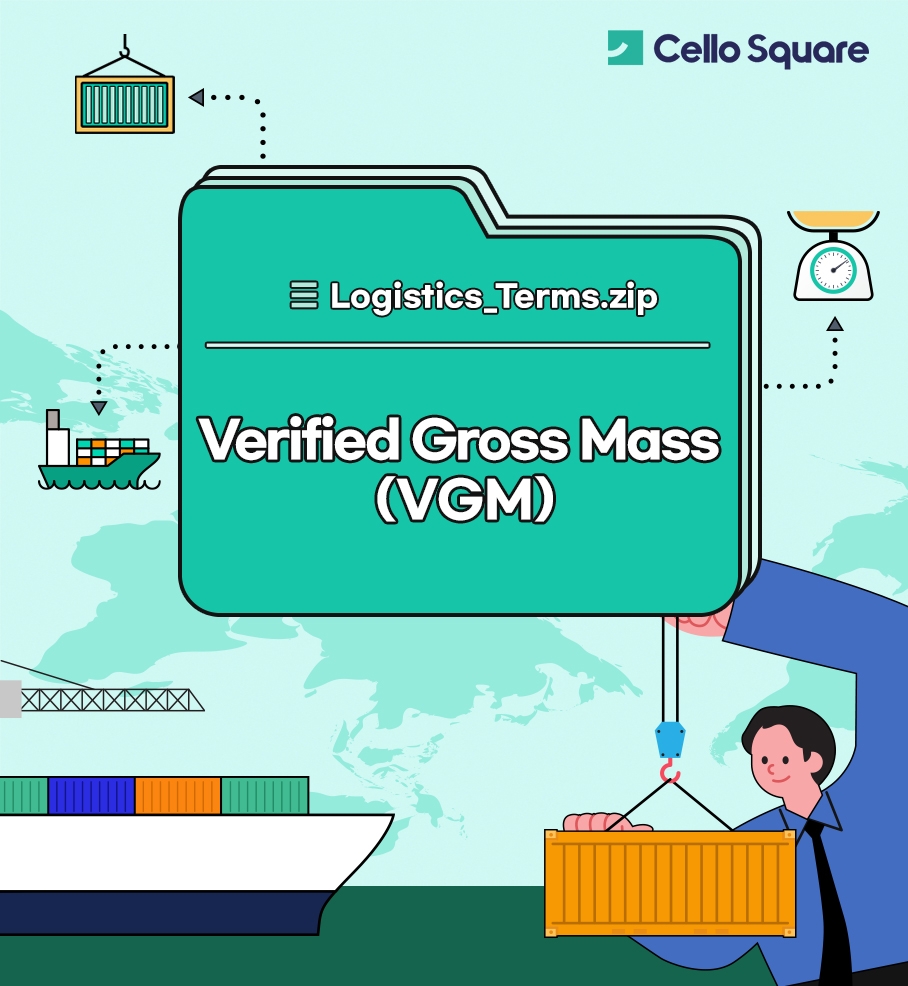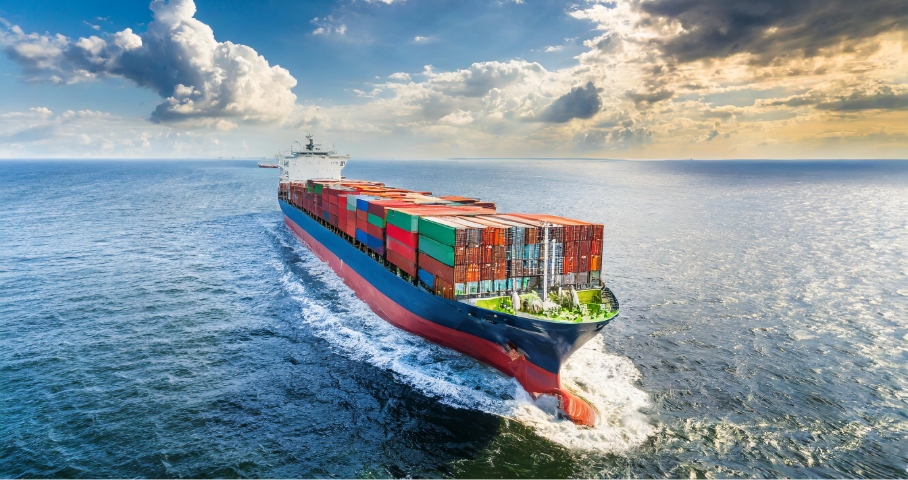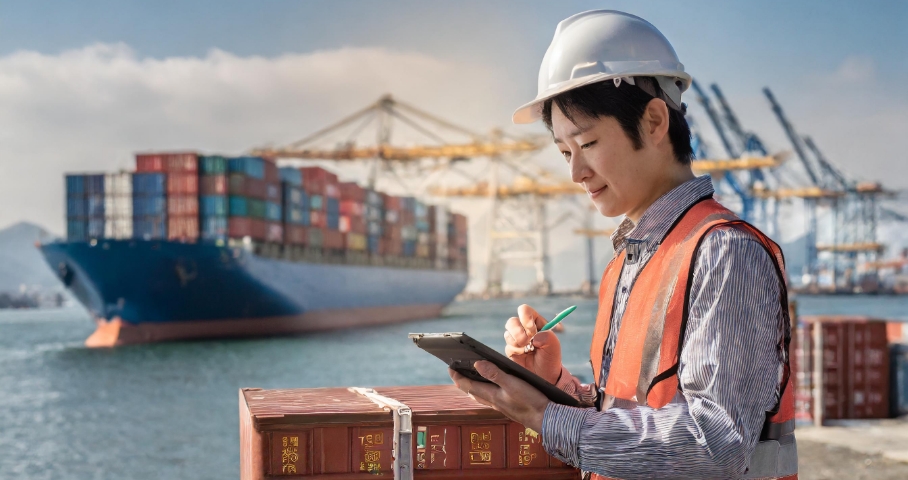

Verified Gross Mass (VGM) is a comprehensive measure that is critical for the safety and legality of shipping containerized cargo via sea. VGM is indeed the total weight of a packed and sealed export container, crucial for the safety and efficiency of shipping operations. It encompasses several key components:
1. The weight of the cargo and products inside the container:
: This includes all items being shipped, regardless of their nature or packaging.
2. The weight of any blocking, bracing, packing materials, pallets, etc., inside the container (dunnage):
These materials are used to secure and protect the cargo during transport, ensuring it remains stationary and undamaged.
3. The weight of any securing equipment such as lashing rods, chains, turnbuckles, etc., used inside the container:
These tools are critical for reinforcing the stability of the cargo load, preventing shifts that could lead to imbalances or accidents.
4. The tare weight of the container itself:
This is the empty weight of the container before it is loaded with cargo and securing materials.
The sum of these components gives the Verified Gross Mass, which must be accurately calculated and verified before the container is allowed to be loaded onto a ship. This process is mandated by international maritime safety regulations to prevent overloading and ensure the stability of vessels at sea. Compliance with VGM requirements is essential for all parties involved in the shipping industry, from shippers to carriers and terminal operators. (Source: Firefly, Adobe)
(Source: Firefly, Adobe)
The requirement to report Verified Gross Mass (VGM) is a critical safety measure in maritime transport, introduced by the International Maritime Organization (IMO) as part of amendments to the International Convention for the Safety of Life at Sea (SOLAS) in 2016. The necessity of reporting VGM arises from the need to enhance the safety of container ships at sea, protect the lives of seafarers, and ensure the integrity of transported goods. Here's why reporting VGM is essential:
1. Prevention of Accidents
Historically, incorrect weight declarations have led to several accidents at sea, including the capsizing of ships, damage to cargo, and the loss of lives. These incidents often occurred because the actual weight of loaded containers significantly exceeded their declared weight, affecting the ship's stability and sea-worthiness.
2. Compliance
VGM reporting is not optional; it is a mandate enforced by international maritime regulations under the SOLAS (Safety of Life at Sea) Convention. These regulations require shippers to accurately report the weight of their containers before they are loaded onto a ship. Failure to comply with these regulations means that carriers are prohibited from loading containers that do not have a documented VGM. Therefore ensuring that all containers on board have been verified for their mass.
3. Ship Stability
Even though a single container's misreported weight might seem insignificant compared to the total mass of a large vessel, the cumulative effect of many such inaccuracies can substantially compromise the ship's stability. Modern container vessels, which can carry upwards of 10,000 to 21,000 TEU (Twenty-Foot Equivalent Units), rely on precise weight and balance calculations to maintain stability at sea. Even small discrepancies, when multiplied across thousands of containers, can lead to significant risks.
4. Safe Navigation
By accurately reporting the VGM, ship operators can make informed decisions about stowage and ship loading plans. This allows for better stability calculations and helps prevent overloading and uneven weight distribution, which are critical for the safe navigation of the vessel.
5. Efficiency and Accountability
Reporting VGM helps in reducing the amount of undeclared weight, leading to more efficient use of vessel capacity and minimizing the risks of overloading. Misdeclared container weights can severely disrupt these carefully coordinated processes, leading to inefficient use of space and resources. With VGM, carriers can optimize the arrangement of containers on the vessel, improving stability and reducing fuel consumption, which in turn enhances the overall efficiency of shipping operations.
6. Cargo Handling and Delivery
Accurate weight information ensures that cargo is handled properly throughout its journey, from loading to unloading. It reduces the risk of damage to the cargo and the container, as well as to the handling equipment and infrastructure at ports. VGM plays a crucial role in the timeliness of cargo delivery. By aligning weight documents with actual weights, VGM prevents the delays that can occur when discrepancies in container weights are discovered. This facilitates smoother transitions through ports and more reliable scheduling for pickup and delivery of containers. Consequently, VGM contributes to the overall reliability of the supply chain, ensuring that goods arrive at their destination on time.
7. Cost
Failing to report the Verified Gross Mass (VGM) of a container by the deadline has significant operational and financial consequences. The immediate effect is that the cargo will not be loaded onto the ship, which sets off a chain of events leading to various additional costs and complications.Freight Costs: Even though the cargo is not loaded, the shipper may still be liable for the freight costs. This is because the space was reserved for the cargo, and the inability to load it due to missing VGM disrupts the carrier's operations.
Storage Costs: The container will need to be stored at the port or a nearby facility until the VGM is provided and the container can be scheduled for the next available departure. These storage costs accumulate daily and can significantly increase the total shipping cost.
Demurrage Charges: In addition to storage costs, demurrage charges may apply. Demurrage fees are levied for containers that remain at the port terminal longer than the agreed free period. The clock starts ticking once the free time expires, leading to potentially high fees
In essence, the reporting of VGM is a fundamental practice that supports the safety and efficiency of global maritime trade. It mitigates the risks associated with incorrect weight declarations, thereby ensuring the well-being of seafarers, the protection of cargo, and the preservation of maritime infrastructure.

The responsibility for reporting Verified Gross Mass (VGM) lies squarely with the shipper. The shipper, as identified on the Bill of Lading—a critical document in the shipping process that serves as a receipt for the cargo and a contract for the transport of the goods—is tasked with accurately measuring and declaring the VGM. This involves ensuring that the total weight of the packed container, including the cargo, dunnage (packing materials), and the container's tare weight, is accurately determined and reported.
Once the VGM is obtained, the shipper must then communicate this information to the ocean carrier and the terminal operator at the port of loading. This reporting must be done sufficiently in advance of the vessel's loading to allow for the preparation of the ship stowage plan. Failure by the shipper to provide accurate VGM information can lead to a range of consequences, including but not limited to the refusal to load the container onto the ship.
Calculating the Verified Gross Mass (VGM) of a container is essential for compliance with maritime safety regulations, and there are two primary methods for obtaining this figure:1. Weighing the Entire Container
This method involves weighing the fully loaded and sealed container after it has been packed with cargo. The weighing must be done using calibrated and certified equipment to ensure accuracy. Such equipment is often found at ports, terminals, or designated weighing stations. Here’s a step-by-step overview:Packing and Sealing the Container: Once the container is packed with all cargo, including packing materials, dunnage, and securing equipment, it is sealed.
Weighing the Container: The packed container is then placed on a certified weighing bridge or scale. This can be at the port terminal or an external location equipped with the necessary facilities.
Deducting the Truck's Weight: If the container is transported to the weighing station on a truck, the weight of the truck, including the fuel, must be subtracted from the total reading to isolate the weight of the container and its contents only.
This method is straightforward and provides a direct measurement of the VGM, ensuring compliance with shipping regulations.
2. Calculating the Weight
The second method involves a calculation based on the individual weights of the container's contents and the container's own tare weight. Here's how it works:Weighing Cargo and Materials: The weight of the cargo, packing materials, pallets, dunnage, and securing equipment inside the container must be accurately measured.
Adding the Tare Weight: The container's tare weight, which is the weight of the empty container, is added to the total weight of the contents. The tare weight is usually found on the container’s CSC (Convention for Safe Containers) plate, typically located on the door of the container.
Summing Up: The sum of the cargo and materials' weight plus the container's tare weight gives the VGM.
This method requires careful documentation and accurate weighing of all components involved in the shipping process. It's particularly useful when the packed items are weighed individually before being loaded into the container.
Both methods are accepted for VGM reporting, with the choice often depending on the shipper's logistical processes, the availability of weighing equipment, and the nature of the cargo being shipped. It's crucial for shippers to ensure the accuracy of the VGM to comply with international shipping regulations and to guarantee the safety of maritime transport. (Source: Firefly, Adobe)
(Source: Firefly, Adobe)
The accurate reporting of Verified Gross Mass (VGM) is indeed paramount in ensuring the safety and compliance of container shipments under international maritime regulations. The choice of method for determining VGM depends on various factors, including the shipper's logistical capabilities, the availability and proximity of certified weighing equipment, and specific requirements of the cargo. Here are some additional considerations to ensure accuracy and compliance in VGM reporting:
1. Compliance with Local Regulations and StandardsCertification of Weighing Equipment: The equipment used for weighing must be calibrated and certified according to local standards and regulations. This ensures the accuracy of the weight measurements and compliance with both local and international laws.
Regulatory Requirements: Shippers must be familiar with and adhere to the regulatory requirements of the country where the weighing is performed. Different countries may have specific guidelines regarding the verification of container weights.
2. Buffer for Weight Variations
Allowance for Weight Variations: Recognizing the practicalities of shipping, many countries permit a tolerance or buffer on the reported VGM. This buffer, typically ranging from 2% to 5%, accounts for minor variations in the weight that might occur due to factors like wear and tear on the container, or changes in cargo weight resulting from evaporation or humidity during the journey.
Purpose of the Buffer: This allowance aims to provide flexibility and account for unavoidable slight discrepancies without compromising safety. It is not intended to permit inaccurately declared weights but to acknowledge the practical aspects of weighing large containers and the physical changes that cargo might undergo.
3. Timing of Submission
VGM information must be submitted to the carrier and, if necessary, the terminal operator, well in advance of loading onto the vessel. The exact timeframe for submission can vary by carrier and port, but it is typically required in time to be incorporated into the ship’s stowage plan.
4. Methods of Submission
VGM can be communicated through the shipping instructions provided by the shipper to the carrier or as a separate document, explicitly dedicated to VGM. The chosen method of submission should be clear, reliable, and in accordance with the carrier's requirements.
Electronic submission is often preferred for its efficiency and accuracy, with many carriers and terminals having systems in place to receive VGM electronically.
5. Documentation Requirements
The VGM documentation must clearly identify the specific container being weighed and declare its Verified Gross Mass. This documentation must be signed, either physically or electronically, by a person authorized by the shipper, verifying the accuracy of the VGM reported.
The document should explicitly state the term "Verified Gross Mass" to distinguish it from estimates or other weight measurements.
6. Practical Implications
Operational Efficiency: Accurately reported VGM facilitates operational efficiency in maritime shipping by enabling proper stowage and stability planning for vessels. It helps in avoiding delays and rejections of cargo at ports due to VGM discrepancies.
Cost Management: Understanding the weighing process and potential buffers can also help shippers manage costs more effectively, as accurate VGM reporting helps avoid penalties, additional charges, or the costs associated with delayed or rejected shipments.
Given these considerations, shippers should ensure that their process for determining VGM is not only compliant with international and local regulations but also accommodates the practical challenges of shipping. Proper planning, adherence to guidelines, and accurate reporting are essential to the successful transport of goods via sea, safeguarding the safety of the vessel, its crew, and the cargo itself.
-
In conclusion, the Verified Gross Mass (VGM) requirement is a pivotal aspect of maritime logistics, playing a crucial role in ensuring the safety, efficiency, and compliance of global shipping operations. By mandating accurate weight verification for all containers before loading, VGM regulations address critical safety risks associated with misdeclared cargo weights, enhancing the stability and structural integrity of vessels at sea. As the global trade landscape continues to evolve, understanding the regulations, methods, and best practices around determining VGM is essential for any logistics company involved in ocean freight shipping.